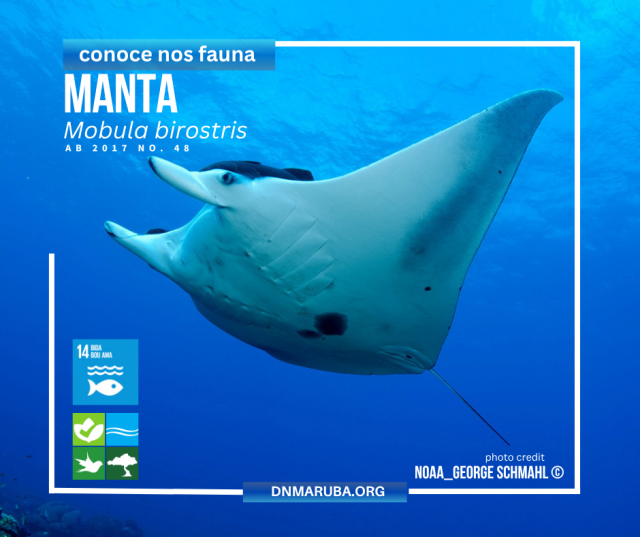Although the manta ray does not occur in our territorial waters, local law protects it
ORANJESTAD—The Department of Nature and Environment (DNM) provides information about the protected manta ray species.
The giant manta ray owes its name to the fact that it is the largest manta ray in the world. With a wingspan of up to 8 meters, the giant manta ray weighs up to 2,000 kg. Females are slightly larger than males. The giant manta ray can reach a maximum speed of 40 kilometers per hour. These giant manta rays are migratory and slow-growing. The manta ray reproduces every 2 to 3 years and gives birth to live young. The young are born after 12 months and are 1.5 meters long. They can live for approximately 45 years.
Its huge, diamond-shaped body with extended wings on either side makes the manta ray easy to identify. There are two body colors: black with a white belly or completely black. The eyes are on either side of the head, and the animal has a large mouth. At the front of their mouths are fleshy head flaps that protrude, forming a channel for water to pass through. They then filter the food before swallowing it. They feed by filtration through their gills large quantities of zooplankton, shrimp, and other small fish.
The giant manta ray is found worldwide in oceans, tropical and subtropical waters, and waters with temperatures between 19 and 22°C (67 and 72°F), but elsewhere you can find them in waters with temperatures between 25 and 30°C (77 and 86°F). Threats include hurricanes, shark species, and humans who catch them for the international trade. Demand for the species' gills is high. The species is classified as endangered by the International Union for Conservation of Nature (IUCN) and protected by local legislation.

